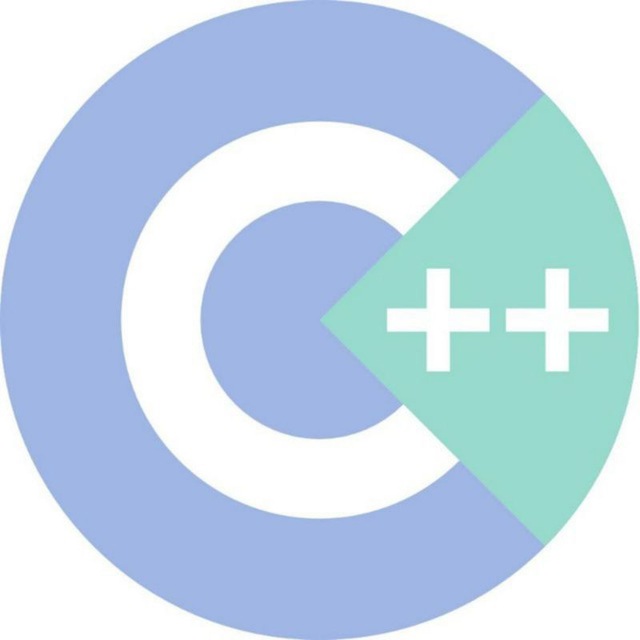d
Size: a a a
2020 July 25
c++filt не знает ничего про default
это можно определить только косвенными признаками
d
один из них полное отсутствие каких-либо конструкторов
ip
то есть move если не может обеспечить перемещение - делает копирование?
struct FooIn the case of both Foo and Bar there is no meaningful way to move the data from one to another because both are ultimately aggregates of POD types - none of their data is indirectly owned (points to or references other memory). So in these cases, the move is implemented as a copy and originals (f, b) remain unaltered after the assignments on the std::move() lines.
{
int values[100];
bool flagA;
bool flagB;
};
struct Bar
{
Foo foo1;
Foo foo2;
};
int main()
{
Foo f;
Foo fCopy = std::move(f);
Bar b;
Bar bCopy = std::move(b);
return 0;
}
Move semantics can only be meaningfully implemented with dynamically allocated memory or unique resources.
2020 July 26
ip
Здесь когда-то спрашивали почему такой код работает, уже не помню почему
struct A {};
A f() {
return {};
}
int main() {
A b;
f() = b; // ?
}AS
Здесь когда-то спрашивали почему такой код работает, уже не помню почему
struct A {};
A f() {
return {};
}
int main() {
A b;
f() = b; // ?
}работает по той же причине, что и вызов любого другого метода временного объекта
ip
работает по той же причине, что и вызов любого другого метода временного объекта
Т.е. это вот так можно переписать
f().operator=(b); ?AS
Т.е. это вот так можно переписать
f().operator=(b); ?да
VV
Товарищи, всем привет!
Не подскажите почему крашится при вызове деструктора для v4?
https://pastebin.com/s9jbfYne
Для больших строк(где, видимо, нет SSO) деструктор работает нормально, а вот для маленьких программа падает.
Не подскажите почему крашится при вызове деструктора для v4?
https://pastebin.com/s9jbfYne
Для больших строк(где, видимо, нет SSO) деструктор работает нормально, а вот для маленьких программа падает.
AS
Товарищи, всем привет!
Не подскажите почему крашится при вызове деструктора для v4?
https://pastebin.com/s9jbfYne
Для больших строк(где, видимо, нет SSO) деструктор работает нормально, а вот для маленьких программа падает.
Не подскажите почему крашится при вызове деструктора для v4?
https://pastebin.com/s9jbfYne
Для больших строк(где, видимо, нет SSO) деструктор работает нормально, а вот для маленьких программа падает.
memcpy(new_space, data_, sizeof(T) * size_);
D
Товарищи, всем привет!
Не подскажите почему крашится при вызове деструктора для v4?
https://pastebin.com/s9jbfYne
Для больших строк(где, видимо, нет SSO) деструктор работает нормально, а вот для маленьких программа падает.
Не подскажите почему крашится при вызове деструктора для v4?
https://pastebin.com/s9jbfYne
Для больших строк(где, видимо, нет SSO) деструктор работает нормально, а вот для маленьких программа падает.
Нельзя копировать сложные объекты (с нетривиальным конструктором копирования) через memcpy😄
VV
Нельзя копировать сложные объекты (с нетривиальным конструктором копирования) через memcpy😄
Но я не хочу копировать каждый нетривиальный объект при каждой реаллокации вектора. Я хочу просто копировать указатель и всё.
AS
Но я не хочу копировать каждый нетривиальный объект при каждой реаллокации вектора. Я хочу просто копировать указатель и всё.
подумай над корректным перемещением с одного участка памяти в другой через placement new и конструктор перемещения (копии, если перемещение невозможно)
AS
или просто загляни в какую-нибудь реализацию std::vector
VV
или просто загляни в какую-нибудь реализацию std::vector
Ок, спасибо за помощь!
s
struct FooIn the case of both Foo and Bar there is no meaningful way to move the data from one to another because both are ultimately aggregates of POD types - none of their data is indirectly owned (points to or references other memory). So in these cases, the move is implemented as a copy and originals (f, b) remain unaltered after the assignments on the std::move() lines.
{
int values[100];
bool flagA;
bool flagB;
};
struct Bar
{
Foo foo1;
Foo foo2;
};
int main()
{
Foo f;
Foo fCopy = std::move(f);
Bar b;
Bar bCopy = std::move(b);
return 0;
}
Move semantics can only be meaningfully implemented with dynamically allocated memory or unique resources.
спасиб
D
Но я не хочу копировать каждый нетривиальный объект при каждой реаллокации вектора. Я хочу просто копировать указатель и всё.
А если в объекте хранятся указатели на собственные поля?
VV
А если в объекте хранятся указатели на собственные поля?
Будет провал. Спасибо!
d
/about@CodeDetectorBot
s
предлагаю на нормальный язык переписать)
/
Может кому пригодятся примеры из книги Праты в текстовом формате https://github.com/TylerBrock/books/tree/master/C%2B%2B%20Primer%20Plus/listings





